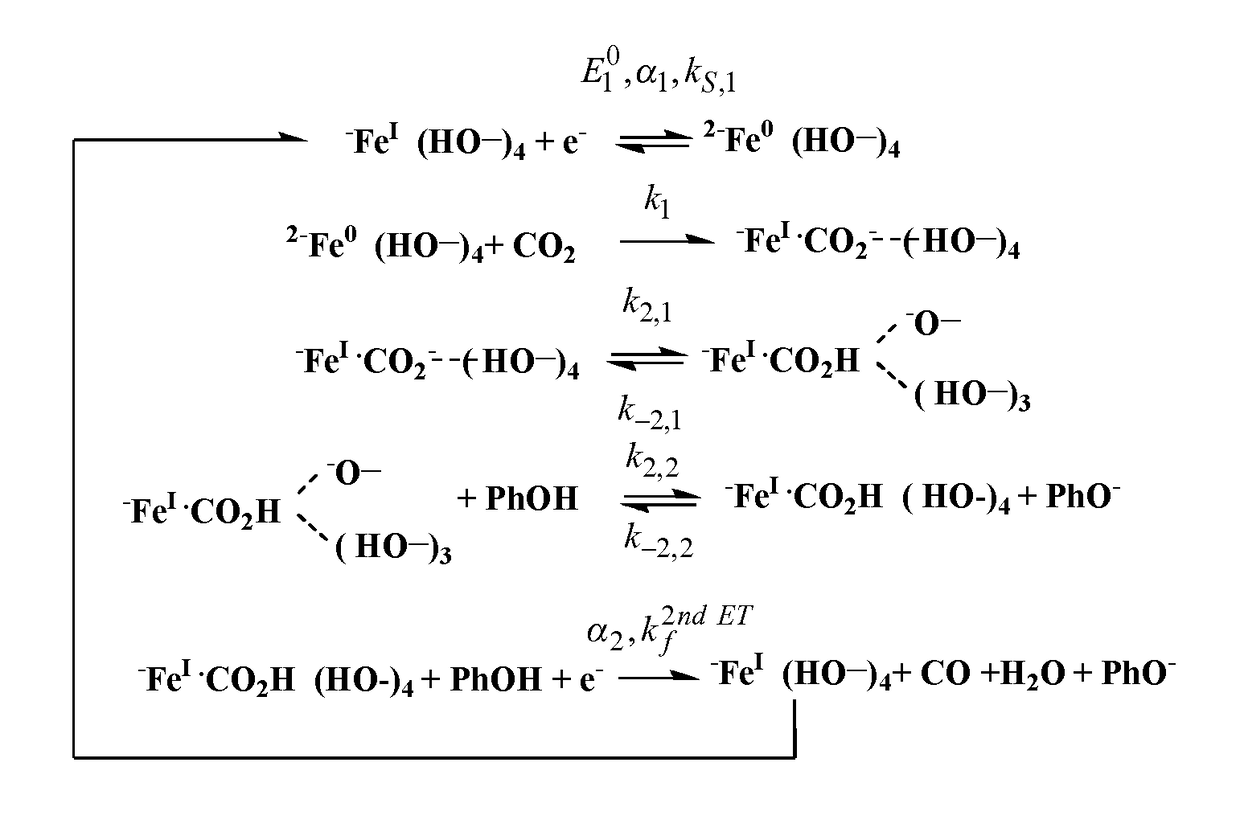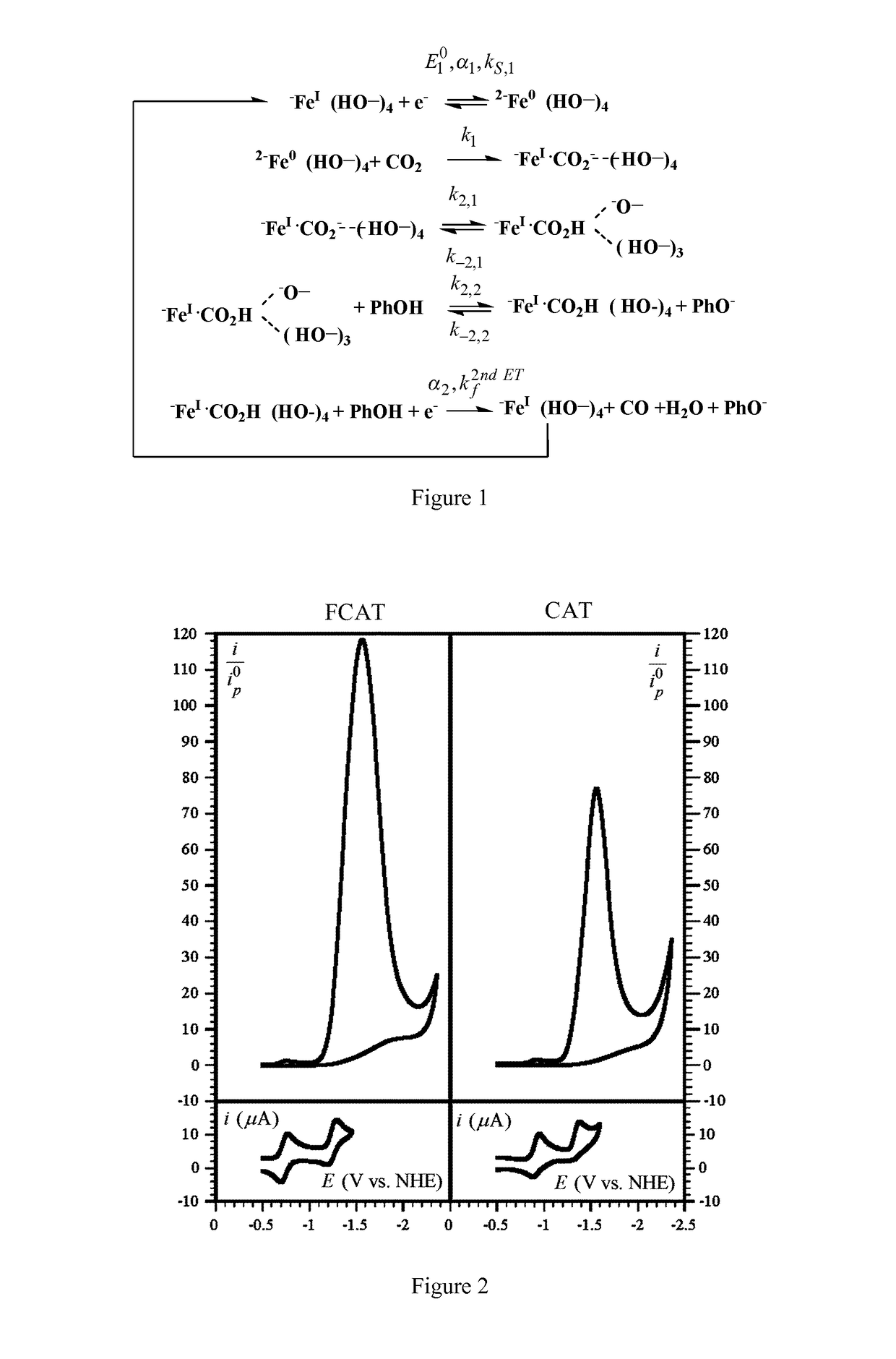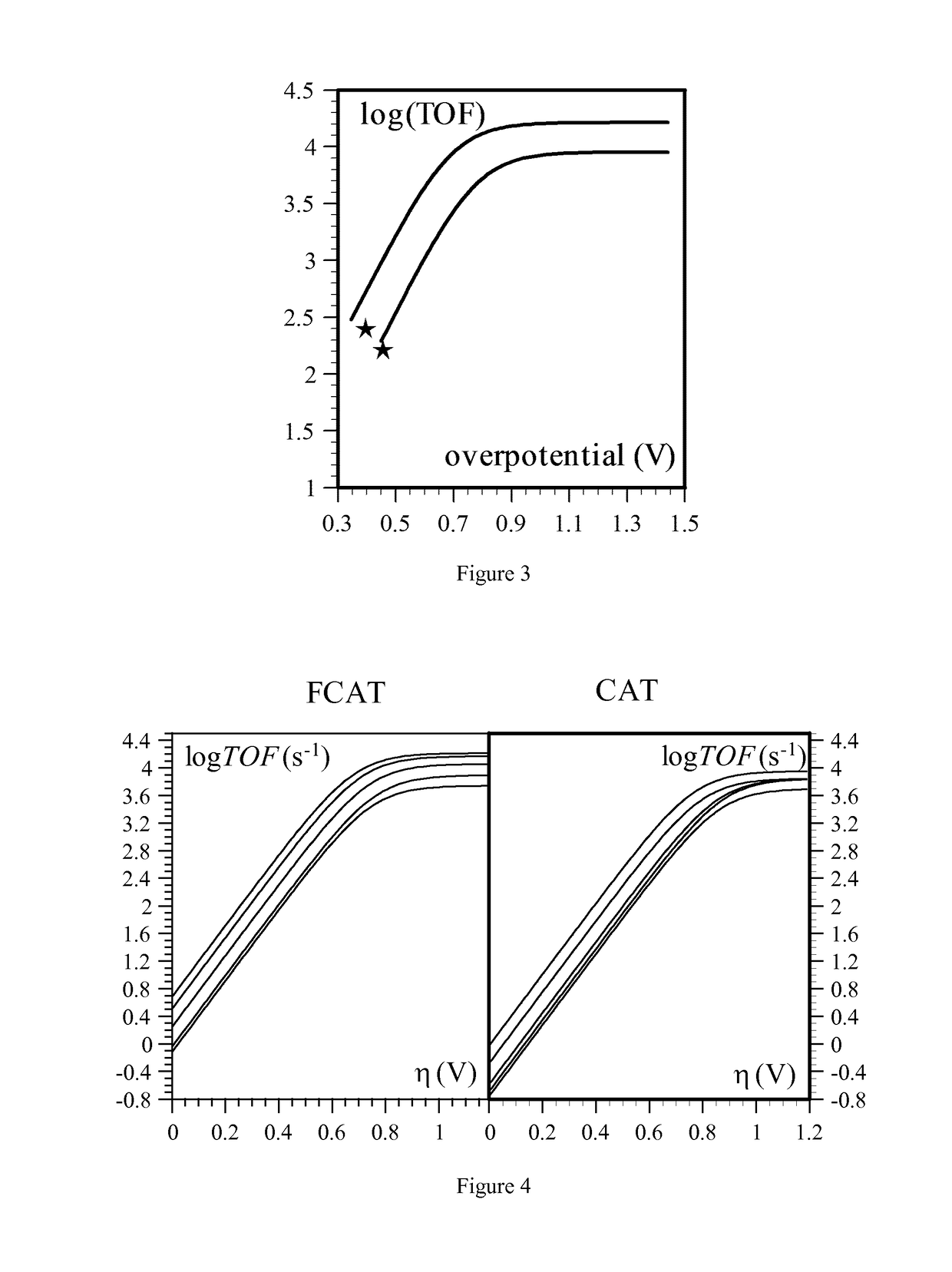Porphyrin molecular catalysts for selective electrochemical reduction of co2 into co
a molecular catalyst and porphyrin technology, applied in the field of new porphyrin molecular catalysts for selective electrochemical reduction of co2 into co, porphyrins and complexes thereof, can solve the problems of less favorable formation of initial fesup>0/sup>co/sub>adducts, not the case, etc., and achieve high selectivity
- Summary
- Abstract
- Description
- Claims
- Application Information
AI Technical Summary
Benefits of technology
Problems solved by technology
Method used
Image
Examples
example 1
Synthesis of Perfluorinated Iron Porphyrin FCAT
Synthesis of 5-(Pentafluorophenyl)dipyrromethane
[0133]A solution of pentaflurobenzaldehyde (1 mL, 8.1 mmol) in freshly distilled pyrrole (25 mL, 0.375 mol) was degassed by argon for 20 minutes, and then trifluoroacetic acid (60 μL, 0.81 mmol) was added. The mixture was stirred for 30 min at room temperature, then diluted with CH2Cl2 (200 mL) and washed with 0.1 M NaOH (200 mL). The organic layer was separated, washed with water and dried over Na2SO4, filtered and the solvent was evaporated at reduced pressure to give brown solid. The residue was purified by column chromatography (silica gel, hexanes / ethyl acetate / triethylamine, 80:20:1). The residue was purified by crystallization (water / ethanol) to yield 5-(Pentafluorophenyl)dipyrromethane as a white powder (1.15 g, 65%). 1H NMR (400 MHz, CDCl3): d 5.90 (s, 1H, CH), 6.00-6.05 (m, 2H, ArH), 6.14-6.19 (m, 2H, ArH), 6.71-6.75 (m, 2H, ArH), 8.06 (s, 2H, NH).
5,15-bis(2′,6′-dimethoxyphenyl)-...
example 2
Mechanistic Studies for Determining the TOF-Overpotential Relationship Using Cyclic Voltammetry
[0137]Cyclic voltammetric responses of FCAT and CAT have been studied using the following experimental protocol.
Experimental Section
Chemicals.
[0138]Dimethylformamide (Acros, >99.8%, extra dry over molecular sieves), the supporting electrolyte NBu4PF6 (Fluka, purriss.), meso-tetraphenylporphyrin iron (III) chloride (Aldrich), phenol (Alfa-Aesar), PhOD (Sigma-Aldrich), were used as received.
[0139]The working electrode was a 3 mm-diameter glassy carbon (Tokai) disk carefully polished and ultrasonically rinsed in absolute ethanol before use. The counter-electrode was a platinum wire and the reference electrode an aqueous SCE electrode. All experiments were carried out under argon or carbon dioxide (or a mixing of both gas) at 21° C., the double-wall jacketed cell being thermostated by circulation of water. Cyclic voltammograms were obtained by use of a Metrohm AUTOLAB instru...
example 3
Electrolysis Results
[0143]The working electrode was a 3 mm-diameter glassy carbon (Tokai) disk carefully polished and ultrasonically rinsed in absolute ethanol before use. The counter-electrode was a platinum wire and the reference electrode an aqueous SCE electrode. All experiments were carried out under argon or carbon dioxide at 21° C., the double-wall jacketed cell being thermostated by circulation of water. Cyclic voltammograms were obtained by use of a Metrohm AUTOLAB instrument. Ohmic drop was compensated using the positive feedback compensation implemented in the instrument.
Preparative-Scale Electrolysis
[0144]Electrolyses were performed using a Princeton Applied Research (PARSTAT 2273) potentiostat. The experiments were carried out in a cell with a carbon crucible as working electrode (S=20 cm2), the volume of the solution is 10 mL. The reference electrode was an aqueous SCE electrode and the counter electrode a platinum grid in a bridge separated from the ...
PUM
| Property | Measurement | Unit |
|---|---|---|
| Molar density | aaaaa | aaaaa |
| Molar density | aaaaa | aaaaa |
| Molar density | aaaaa | aaaaa |
Abstract
Description
Claims
Application Information
 Login to View More
Login to View More - R&D
- Intellectual Property
- Life Sciences
- Materials
- Tech Scout
- Unparalleled Data Quality
- Higher Quality Content
- 60% Fewer Hallucinations
Browse by: Latest US Patents, China's latest patents, Technical Efficacy Thesaurus, Application Domain, Technology Topic, Popular Technical Reports.
© 2025 PatSnap. All rights reserved.Legal|Privacy policy|Modern Slavery Act Transparency Statement|Sitemap|About US| Contact US: help@patsnap.com



